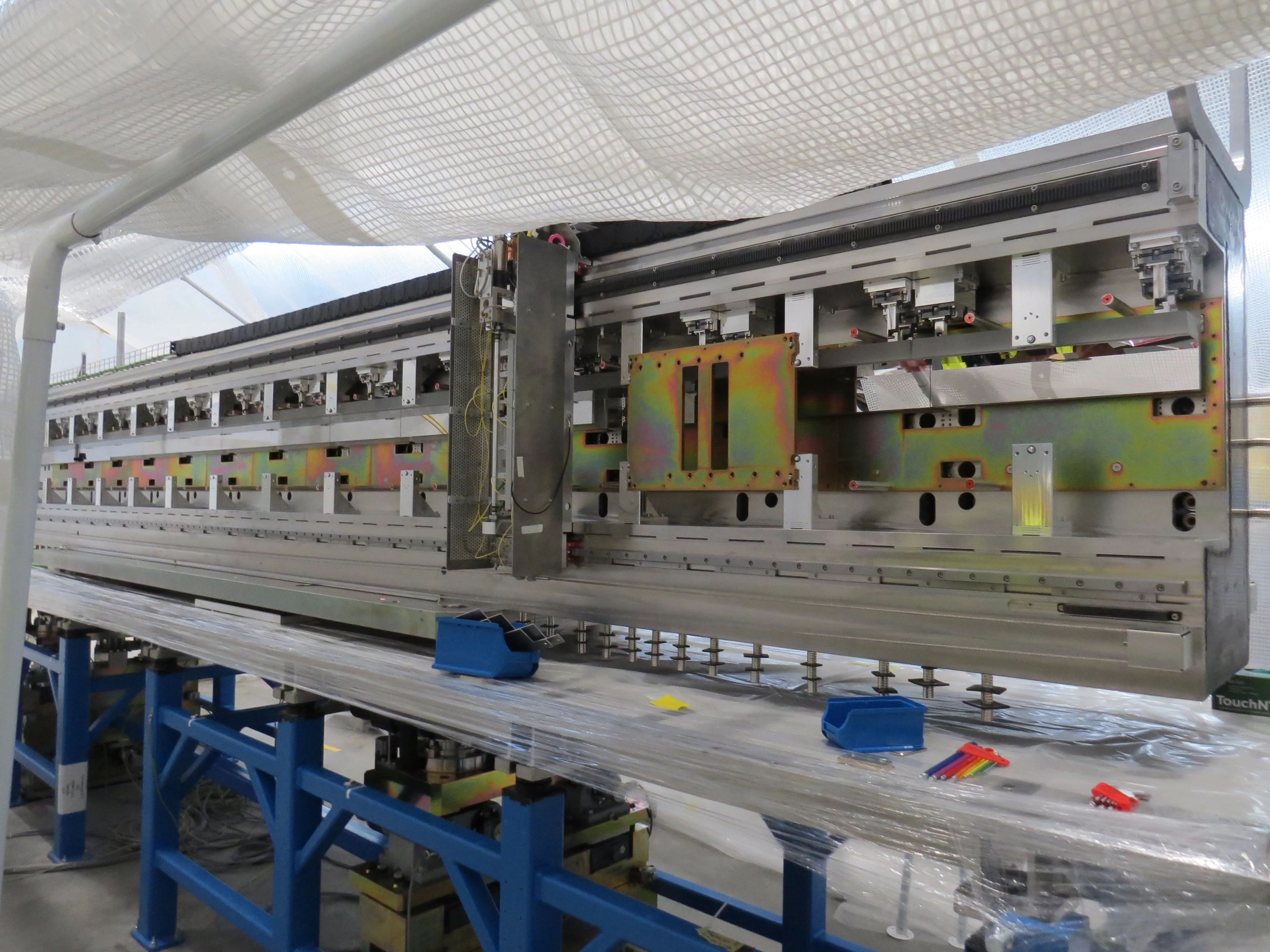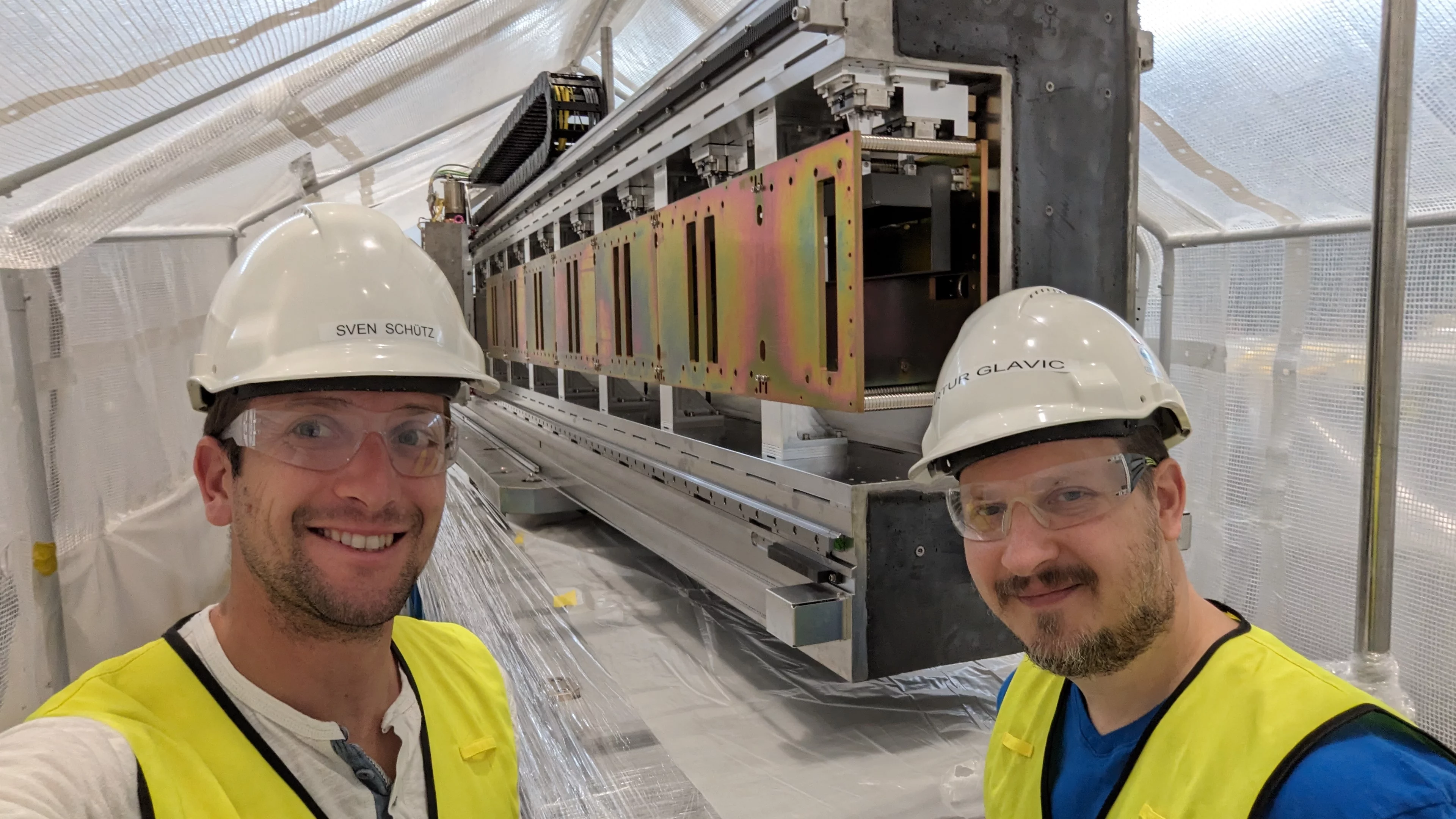PSI has finalized the precision Selene neutron optics for the ESTIA instrument. The complex state-of-the-art guide was installed at the European Spallation Source as a Swiss in-kind delivery.
ESTIA is one of the two initial reflectometers for the European Spallation Source (ESS). It will have a horizontal scattering plane and is optimised for a small sample area and polarized measurements. ESTIA was proposed by the Swiss-Danish Instrumentation Consortium under the lead of Jochen Stahn. Starting from summer 2015, after the acceptance of the instrument proposal as one of the initial 15 instrument of the ESS, the project is led by PSI as Swiss in-kind contribution. Please have a look at our animation and take a flight through ESTIA.
The special feature of ESTIA is the focusing of the neutron beam to the sample in both the scattering and the surface plane with a high divergence of 1.5° x 1.5°. This allows to choose between various operation modes, e.g. for high-intensity specular reflectivity, extended q-range high-resolution, or almost conventional measurements with a well collimated beam at a fixed angle. In all modes the beam footprint and the divergence can be controlled independently by apertures far from the sample. This is realized using a so called Selene neutron guide optics.
Selene neutron guide
The centrepiece of ESTIA is its truly focusing neutron guide, based on the Selene concept. A Selene guide transports only the useful neutrons and enables beam manipulation similar to a photographic lens. In conventional optics, point-to-point focusing allows to define the image size with an illumination field diaphragm located at the initial focal point (the virtual source). The divergence of the beam is controlled by an aperture behind the optical lens, far from the image.
For neutrons the lens has to be replaced by a reflecting device, here a planar-elliptic mirror. Like all focusing optical devices this suffers from aberrations, which are largest in this case for reflections close to the focal points. Avoidance of these regions and compensation of the coma aberration by a second, identical reflector results in the optical path as illustrated in the 3D graphics.
The Selene guide is truly focusing in a sense that the shape of the virtual source slit at the first focal point is fully reproduced at the final focal point. Thus the beam footprint on the sample can be tuned and over-illumination can be minimized. This is in contrast to other neutron guides concepts, that over illuminate the sample and increase the background level for the experiment. In addition, compared to these conventional neutron optics, the total beam intensity within the Selene guide (neutrons not actually reaching the sample) is drastically reduced, which results in an even lower background.
Implementation at ESS
These practical advantages come at the cost of needing a high precision in the shape of the optics as a beam of neutrons has to be transported of 24m while hitting the final focus at the sample position within less than half a millimetre deviation. The ESTIA design team has therefore developed a novel support and adjustment mechanism that allows to precisely place and characterize the individual segments of the mirror, 60 individual glass mirrors that work together to form two vertical and two horizontal planar-elliptical mirrors.
Between August 14th and 18th, Sven Schütz and Artur Glavic from PSI have visited the ESS side to finalize the installation of the Selene guide by placing the mirror segments in the already prepared support and characterization system. This concludes the large effort that PSI and our partners at ESS have put into design, manufacturing, installation and testing of this complex piece of equipment.
Contact:
Dr. Artur Glavic
Laboratory for Neutron and Muon Instrumentation (LIN)
Paul Scherrer Institute, Forschungsstrasse 111, 5232 Villigen PSI, Switzerland
Telephone: +41 56 310 4682
Email: artur.glavic@psi.ch




